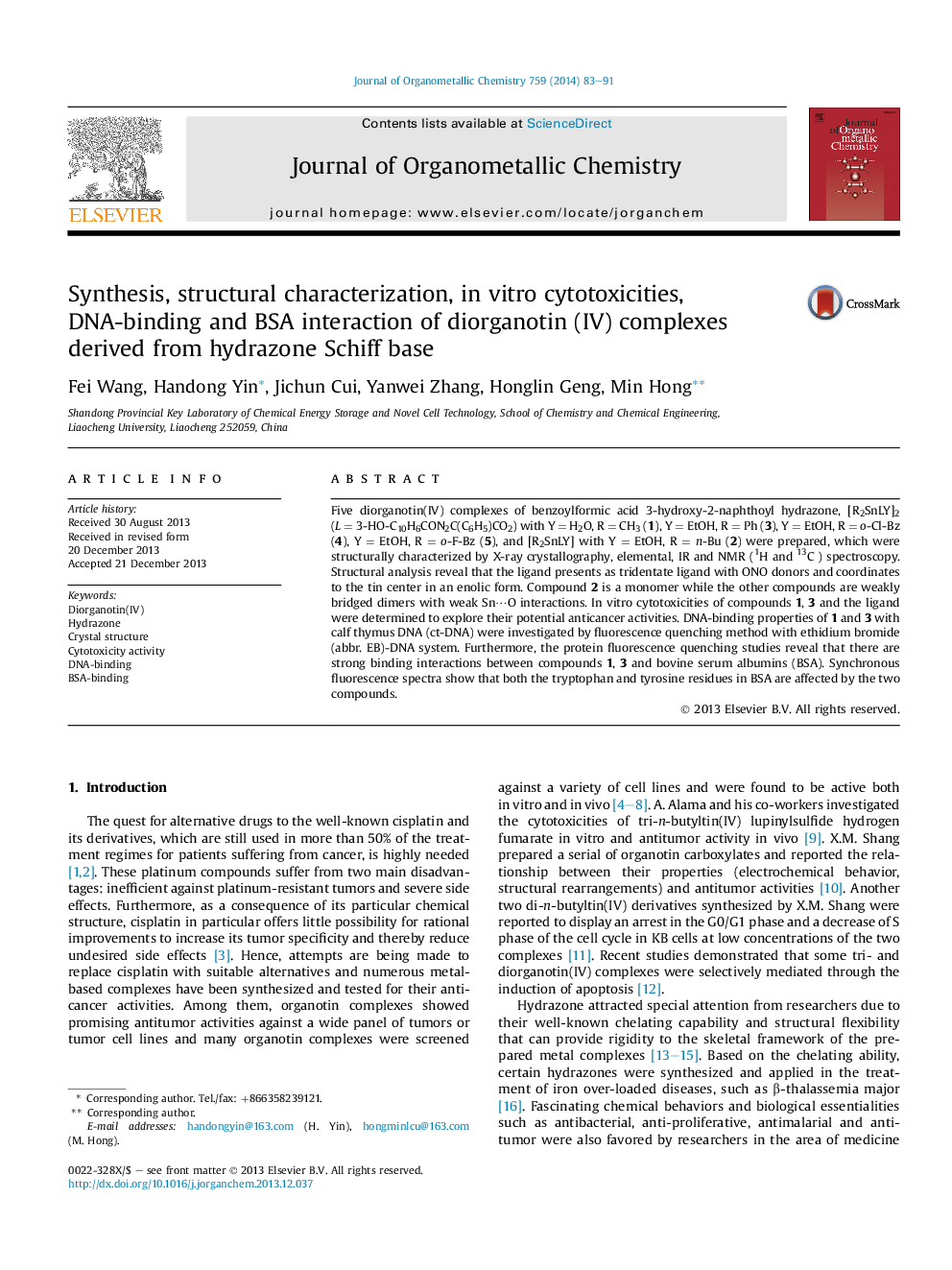| Article ID | Journal | Published Year | Pages | File Type |
|---|---|---|---|---|
| 1323540 | Journal of Organometallic Chemistry | 2014 | 9 Pages |
•Five diorganotin(IV) complexes were synthesized and characterized.•Cytotoxicities of two compounds and the ligand were tested.•DNA binding and protein binding investigations were carried out with fluorescent spectra.
Five diorganotin(IV) complexes of benzoylformic acid 3-hydroxy-2-naphthoyl hydrazone, [R2SnLY]2 (L = 3-HO-C10H6CON2C(C6H5)CO2) with Y = H2O, R = CH3 (1), Y = EtOH, R = Ph (3), Y = EtOH, R = o-Cl-Bz (4), Y = EtOH, R = o-F-Bz (5), and [R2SnLY] with Y = EtOH, R = n-Bu (2) were prepared, which were structurally characterized by X-ray crystallography, elemental, IR and NMR (1H and 13C ) spectroscopy. Structural analysis reveal that the ligand presents as tridentate ligand with ONO donors and coordinates to the tin center in an enolic form. Compound 2 is a monomer while the other compounds are weakly bridged dimers with weak Sn⋯O interactions. In vitro cytotoxicities of compounds 1, 3 and the ligand were determined to explore their potential anticancer activities. DNA-binding properties of 1 and 3 with calf thymus DNA (ct-DNA) were investigated by fluorescence quenching method with ethidium bromide (abbr. EB)-DNA system. Furthermore, the protein fluorescence quenching studies reveal that there are strong binding interactions between compounds 1, 3 and bovine serum albumins (BSA). Synchronous fluorescence spectra show that both the tryptophan and tyrosine residues in BSA are affected by the two compounds.
Graphical abstractFive diorganotin(IV) complexes containing hydrazone Schiff base were synthesized and characterized. The in vitro cytotoxicities of two compounds as well as the ligand were investigated against several human cancer cell lines. Additionally, bioactivity mechanism such as DNA-binding and BSA-binding were explored via fluorescence spectra.Figure optionsDownload full-size imageDownload as PowerPoint slide
